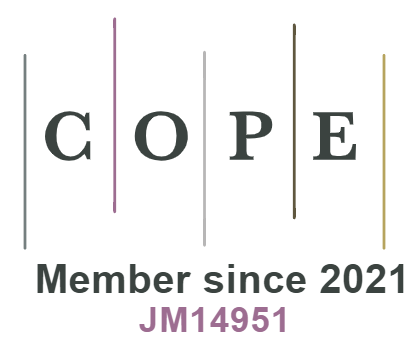New diagnostic methods of evaluation of voice activity for phoniatrists’ and speech therapists’ needs
DOI:
https://doi.org/10.18778/2544-7238.01.08Keywords:
diagnostic methods, evaluation of voice activity, phoniatrists’ and speech therapists’ needsAbstract
The aim of the study was to present new diagnostic methods of evaluation of voice activity for phoniatrists’ and speech therapists’ needs. The voice formation depends not only on the correct contraction and vibration of the vocal cords, which reinforce the acoustic Energy of the fundamental tone, but also on the function of the resonant cavities and articulatory organs, affecting the timbre and the production of sound elements of speech, that is sounds. The European Society of Laryngology has proposed a diagnostic protocol since 2001. It recommends: videolaryngostroboscopy (VLS), acoustic examination and voice self‑assessment, except for interview and physical examination. Examination of acoustic parameters allows for objective analysis of the larynx tone. This is an important and only advantage of this method. Comprehensive voice analysis includes subjective and objective examinations, evaluating, based on GRBAS scale, the voice character and different modifications of voice malfunction, that specify functional, emotional and physical condition of examined person, may determine how the extent of the voice disorder may affect quality of life. They allow to determine proper etiology, make a diagnosis, plan the treatment schedule and follow up voice disorder effects of treatment.
Downloads
References
Dejonckere P.H., Bradley P., Clemente P., Cornut P., Crevier‑Buchman L., Friedrich G., Van De Heyning P., Remacle M., Woisard V., 2001, A basic protocol for functional assessmentof voice pathology, especially for investigating the efficacy of (phonosurgical) treatments andevaluating new assessment techniques, „European Archives of Oto‑Rhino‑Laryngology”, vol. 258, s. 77–82.
Google Scholar
DOI: https://doi.org/10.1007/s004050000299
Hirano M., 1981, Clinical examination of voice, New York: Springer.
Google Scholar
Kluch W., Zielińska‑Bliźniewska H., Olszewski J., 2011, Ocena wideolaryngostroboskopowofoniatryczna i percepcyjna głosu u chorych ze stanami przedrakowymi krtani przed leczeniem chirurgicznym i rehabilitacją i po nich, „Lekarz Wojskowy”, nr 89(4), s. 1–5.
Google Scholar
Mathieson L., 1993, Vocal tract discomfort in hyperfunctional dysphonia, „Voice”, vol. 2, s. 40–48.
Google Scholar
Niebudek‑Bogusz E., 2009, Postępowanie w dysfoniach zawodowych w krajach Unii Europejskiej i na świecie, „Medycyna Pracy”, nr 60(2), s. 151–158.
Google Scholar
Niebudek‑Bogusz E., Woźnicka E., Śliwińska‑Kowalska M., 2010, Zastosowanie skali dyskomfortu traktu głosowego w diagnozowaniu dysfonii czynnościowej, „Otorynolaryngologia”, nr 9(4),s. 204–209.
Google Scholar
Obrębowski A., 2008, Narząd głosu i jego znaczenie w komunikacji społecznej, Poznań: Wydawnictwo Naukowe Uniwersytetu Medycznego im. Karola Marcinkowskiego.
Google Scholar
Owczarek K., Zielińska‑Bliźniewska H., Olszewski J., 2013, Przewlekłe choroby narządu głosu spowodowane nadmiernym wysiłkiem głosowym, „Laryngologia w Przypadkach – Medycynapo Dyplomie”, nr 1(65), s. 4–10.
Google Scholar
Pruszewicz A., 2002, Metody badania narządu głosu „Postępy w Chirurgii Głowy i Szyi”, nr 2(2), s. 3–25.
Google Scholar
Pruszewicz A., Obrębowski A., Wiskirska‑Woźnica B., Wojnowski W., 2004, W sprawie kompleksowej oceny głosu – własna modyfikacja testu samooceny sprawności głosu (Voice Handicap Index), „Otolaryngologia Polska”, nr 58(3), s. 547–549.
Google Scholar
Sielska‑Badurek E., Niemczyk K., 2015, Diagnostic protocol in voice disorders, „Polski Przegląd Otorynolaryngologiczny”, nr 4(2), s. 12–18.
Google Scholar
DOI: https://doi.org/10.5604/20845308.1152198
Wiskirska‑Woźnica B., 2002, Kompleksowa ocena głosu w schorzeniach organicznych i czynnościowych krtani, rozprawa habilitacyjna, Poznań: Akademia Medyczna.
Google Scholar
Woźnicka E., Niebudek‑Bogusz E., Kwiecień J., Wiktorowicz J., Śliwińska‑Kowalska M., 2012, Applicability of the vocal tract discomfort (VTD) scale in evaluating the effects of voice therapyof occupational voice disorders, „Medycyna Pracy”, vol. 63, s. 141–152.
Google Scholar
Zielińska‑Bliźniewska H., Pietkiewicz P., Miłoński J., Urbaniak J., Olszewski J., 2013, Analiza akustyczna i wydolności głosu nauczycieli akademickich z rozpoznaną hiperfunkcjonalną dysfonią za pomocą oprogramowania DiagnoScope Specialist, „Otolaryngologia Polska”,nr 67(3), s. 144–148.
Google Scholar
DOI: https://doi.org/10.1016/j.otpol.2013.02.001
Downloads
Published
How to Cite
Issue
Section
License

This work is licensed under a Creative Commons Attribution-NonCommercial-NoDerivatives 4.0 International License.












